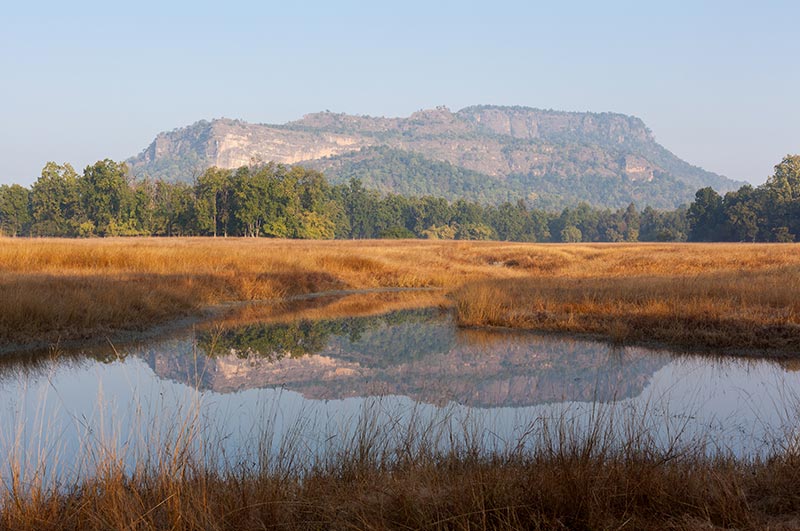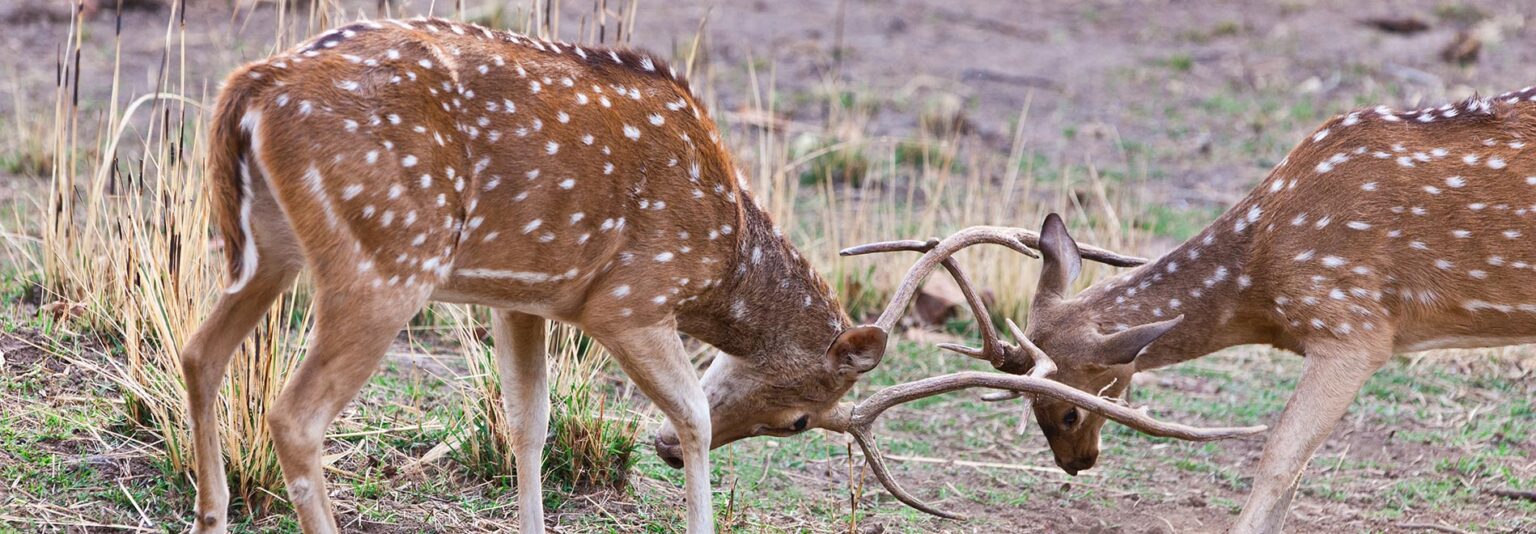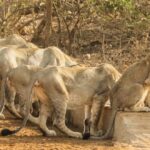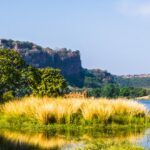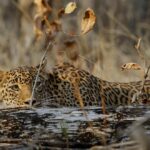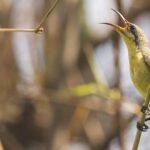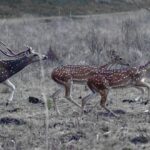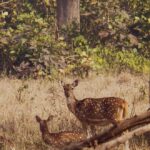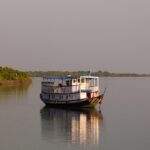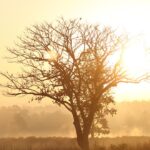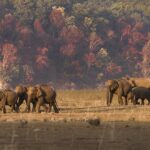Unveiling the Mysteries of Bandhavgarh National Park
Embark on a captivating exploration into the heart of India, where wild tigers roam amidst ancient mysteries. Bandhavgarh National Park, a jewel of Madhya Pradesh, beckons nature enthusiasts and adventure seekers from around the globe. This park’s captivating allure stems not only from the chance to encounter the majestic Royal Bengal tiger but also from the intriguing history whispered by the Bandhavgarh Fort.
A Realm of Enchanting Landscapes: Exploring the Geography of Bandhavgarh National Park
Nestled amidst the Satpura mountain range in the Umaria-Shahdol district, Bandhavgarh National Park boasts a breathtaking landscape. Located at the northeastern edge of Madhya Pradesh, with coordinates spanning 23°30′ to 23°46′ N and 80° 11′ to 80°36′ E, the park features 32 rolling hills, culminating in a central natural fort that offers unparalleled views. Elevations range from 410 meters (1,345 ft) to 810 meters (2,657 ft), creating a diverse topography. While the park encompasses a vast 1161 sq. km area, tourists primarily explore the 105 sq. km Tala Range, renowned for its abundant wildlife.
Seasonal Splendor: Understanding the Climate of Bandhavgarh National Park
Bandhavgarh National Park experiences a moderate climate with distinct seasonal variations. Summers, lasting from April to June, can be challenging with scorching sunlight and occasional heatwaves. Peak summer temperatures can reach up to 45 degrees Celsius. The monsoon season arrives in late June, bringing life-giving rains from July to October. The park remains closed to visitors during this monsoon period. Winter descends upon Bandhavgarh National Park in November, lingering until March. Mornings can be refreshingly cool, with temperatures dipping to 5°C, while daytime highs hover around 18°C.
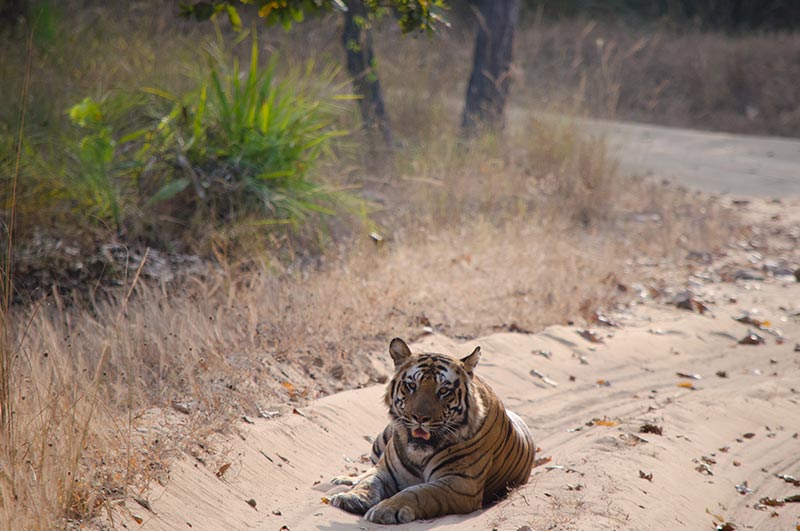
Planning Your Expedition: The Best Time to Visit Bandhavgarh National Park
The park welcomes visitors from October 16th to June 30th, drawing thousands of tourists eager to witness its wonders. The park remains closed for the rest of the year, and even during open season, evening safaris are not available on Wednesdays. To experience Bandhavgarh National Park at its finest, plan your visit between October and April.
Reaching the Heart of the Wild: How to Get to Bandhavgarh National Park
Bandhavgarh National Park boasts excellent connectivity by air, road, and rail.
-
- By air – The nearest airport for reaching Bandhavgarh is the Jabalpur Airport, about 200km away. The airport is well-connected to major airports like Delhi and Mumbai. Taxi services are available from this airport to the Bandhavgarh National Park, which is about 4.5 hours’ drive away from here.
- By rail – The nearest railway stations for reaching Bandhavgarh are Umaria station (37kms/45mins), Katni railway station (100kms/02:00hrs) and Jabalpur railway station (180kms/4:00hrs). Taxi and bus services are available from all these railway stations to reach Bandhavgarh National Park.
- By road – The adventure of a road trip is unforgettable and Bandhavgarh is best accessible by road. Tourists can avail regular and bus services available from nearby cities like Umaria and Bandhavgarh.
Here are a few popular options to consider for a memorable stay:
-
-
- MahuaKothi
- Samode safari lodge
- Treehouse Hideaway
- Kings Lodge
- Bandhav Vilas
- Bandhavgarh Jungle Lodge
- Tiger Den
- Aranyak resort
- Nature Heritage
- Bandhav
-
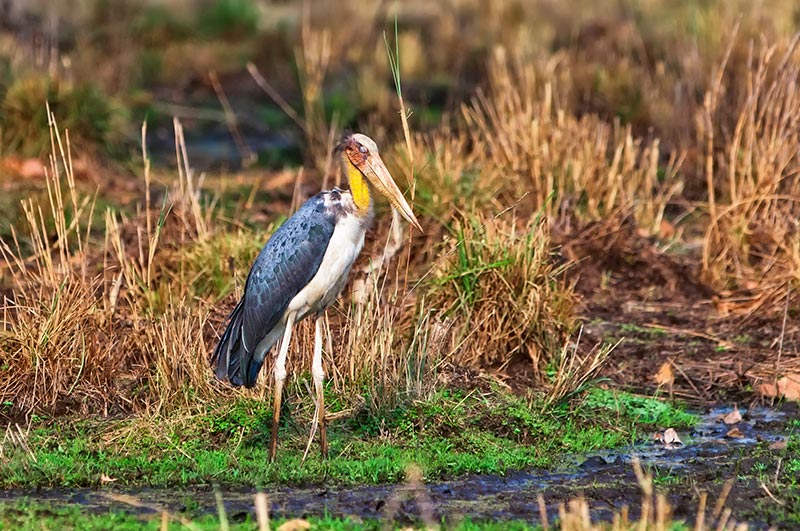
A Tapestry of Trees: Exploring the Flora of Bandhavgarh National Park
Divided into four distinct zones – Tala, Magadhi, Panpatha, and Khitauli – Bandhavgarh National Park showcases a rich tapestry of plant life. The Tala zone reigns supreme in terms of biodiversity.
As you venture into the park, be greeted by a majestic Sal forest blanketing the valleys and lower slopes. Gradually, this transitions into a mixed deciduous forest on the hills and hotter, drier areas in the south and west.
Bandhavgarh National Park boasts an impressive array of flora, including:
| Saj (Terminalia tomentosa) |
| Tendu |
| Arjun (Terminalia arjuna) |
| Amla (Emblica officinalis) |
| Dhaora (Anogeissus latifolia) |
| Salai (Boswellia serrata) |
| Palas (Butea monosperma) |
| Mango (Mangifera indica) |
| Babul (Acacia nilotica) |
| Jamun (Blackberry) (Syzygium cumini) |
| Ber (Syzygium mauritianum) |
| Banyan (Ficus benghalensis) |
| Dhok (Anogeissus pendula) |
| Dhak or Chila (flame of the forest) {Butea monosperma} |
| Kadam (Anthocephalus cadamba) |
| Khajur (Phoenix sylvestris) |
| Khair (Acacia catechu) |
| Lagerstroemia |
| Boswellia |
| Bamboo |
| Pterocarpus |
| Madhuca |
A Haven for Wildlife: Exploring the Fauna of Bandhavgarh National Park
Bandhavgarh National Park is a haven for a dazzling array of wildlife. The park is home to a staggering 37 species of mammals, over 250 species of birds, and a remarkable 80 species of butterflies. Keep your eyes peeled for creatures like:
| Asiatic Jackal |
| Bengal Fox |
| Sloth Bear |
| Ratel |
| Gray Mongoose |
| Striped Hyena |
| Jungle Cat |
| Leopard |
| Tiger (the park’s star attraction, the majestic Royal Bengal Tiger) |
| Wild Pigs |
| Spotted Deer |
| Sambar |
| Chausingha |
| Nilgai |
| Chinkara |
| Gaur |
| Dhole |
| Small Indian Civet |
| Palm Squirrel |
| Lesser Bandicoot Rat |
| Common Langurs |
| Rhesus Macaque |
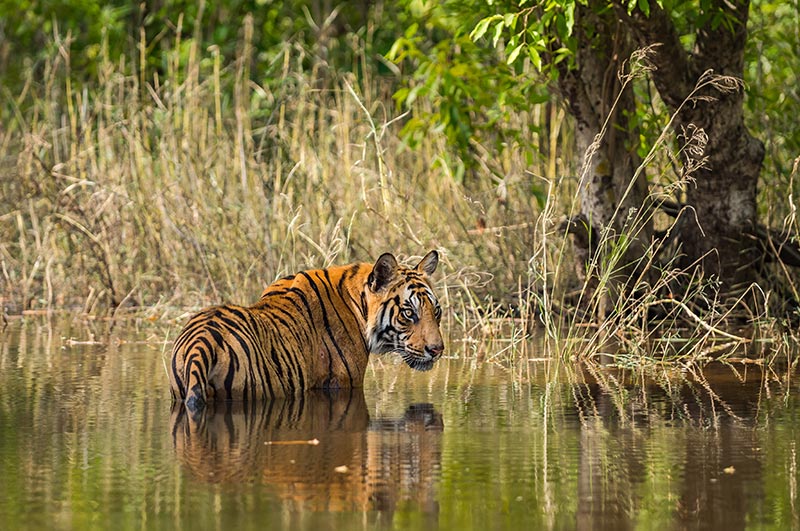
Unforgettable Encounters: Exploring Activities and Safaris in Bandhavgarh National Park.
Bandhavgarh National Park offers more than just stunning wildlife. Explore ancient caves and ruins, decipher inscriptions, and marvel at prehistoric rock paintings. The park ignites a sense of wonder in all who visit.
Embark on a Safari Adventure: Jeep Safari or Elephant Safari
Two exhilarating safari options await you in Bandhavgarh National Park: jeep safaris and elephant safaris.
Jeep safari –
The most popular choice, jeep safaris are a cost-effective way to explore the park. Choose from a full-jeep safari, where you have the entire jeep to yourselves with a guide and driver, or a single-seat safari, where you share a jeep with other tourists. A guide is mandatory on all safaris. The park’s three main safari zones – Tala, Magadhi, and Khitauli – are all accessible by jeep. For optimal wildlife viewing, schedule your jeep safaris for dawn to 10 am or 4 pm to dusk, when animals are most active.
Elephant Safari –
While pricier and requiring advanced booking, elephant safari offer a unique opportunity to get closer to wildlife while enjoying a more tranquil experience.
Elephant safaris are available when the forest department uses elephants for morning tiger tracking.
Safari Timings:
-
-
- Morning – 6:00-11:00am (5hrs)
- Afternoon – 3:00-6:00pm (3hrs)
-
Summer Safari Timings:
-
-
- Morning – 5:30-10:30am (5hrs)
- Afternoon – 3:30-6:30pm (3hrs)
-
Important Note Don’t forget to carry valid ID proof like a passport, driver’s license, PAN card, or voter ID card.
Beyond the Safari: Exploring the Surroundings of Bandhavgarh National Park
For a truly enriching experience, extend your stay beyond the park and explore the captivating sights surrounding Bandhavgarh National Park.
-
-
- Historical and Cultural Gems: Immerse yourself in history at the 2,000-year-old Bandhavgarh Fort, or conquer the challenges of Bandhavgarh Hill for breathtaking panoramic views. Explore the lesser-known Climber’s Point, delve into the past at the Baghel Museum, or chase cascading beauty at the Cheshpur Waterfalls.
- Spiritual Sojourns: Find peace at the Jwalamukhi Temple, or marvel at the Shesh Shaiya, a reclining statue of Lord Vishnu. Explore the ancient Badi Gufa caves or unravel the mysteries of the Three Cave Point.
- Adventure Awaits: Embark on a thrilling trek to Bandhavgarh Fort and add a touch of adventure to your trip.
- Shopping Delights: Don’t forget to indulge in some shopping at the Bandhavgarh Market, where you can find unique souvenirs and local crafts to commemorate your unforgettable experience.
-
